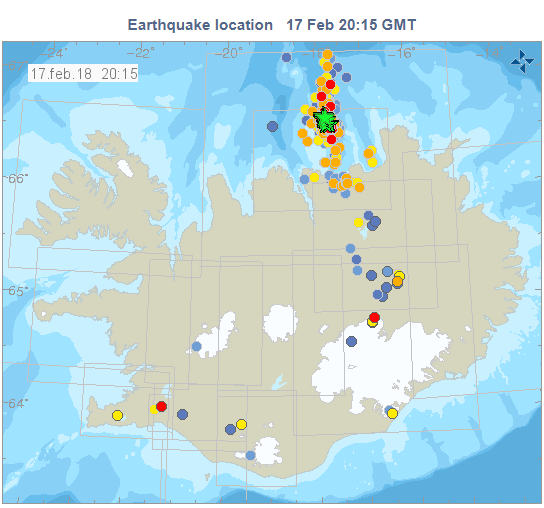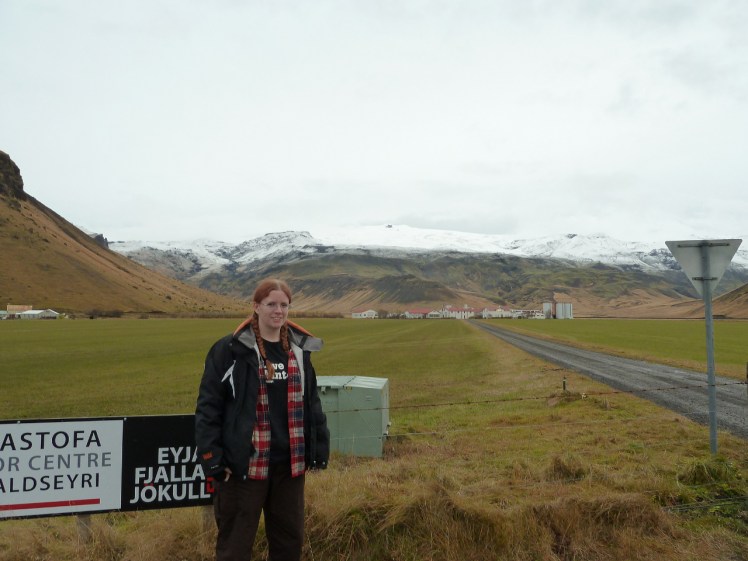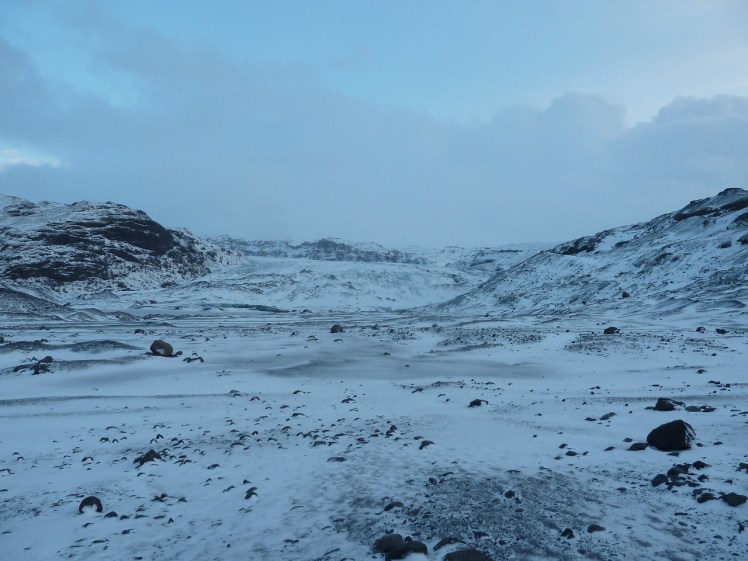You may have seen the imminent Katla eruption in the news lately, a huge & deadly volcano about to blow Iceland – and European air travel – to kingdom come. Or is it?
Well, we don’t really know. As a species, we still don’t know much about volcanoes and we certainly can’t predict with any accuracy when, or indeed whether, they’re about to erupt. We can watch for patterns, see if a volcano erupts on a regular schedule, and we can monitor geological activity. But that’s it.
In 2014, a massive series of tremors north of Vatnajökull indicated movement of magma. Volcanologists tracked these tremors along the lines of known dykes and no one was surprised when it eventually emerged at the end of August at the site in the remote Highlands now called Holuhraun. I watched the earthquakes for months on the Icelandic Met Office website. No one was more excited than me when that magma burst to the surface.

Holuhraun lava field, July 2016
Iceland has experienced 71 earthquakes in the last 48 hours, as I write this. All but two were under magnitude 2. Those remaining two were under magnitude 3. In comparison, there were thousands of earthquakes per hour in the weeks running up to the Holuhraun eruption, with many over magnitude 3, and all concentrated in a very small area.

This is Iceland’s earthquake report today,
There’s not much going on Iceland tectonics-wise right now. There’s a single dot in Katla right now – that’s the yellow dot at the bottom of the glacier at the lowest point of the south coast. But even a few earthquakes, even a cluster of earthquakes, doesn’t necessarily mean anything is going to happen. A while ago I got excited about a couple of days of earthquake clusters near Grímsey. Before that there was a cluster off the south west coast.

This is what a cluster looks like.
By our understanding, yes, Katla is “overdue”. She erupts every 50-100 years and last erupted in 1918. But then again, “mouth of the underworld” Hekla erupted like clockwork every decade but last erupted in February 2000. That’s very overdue. So Iceland’s volcanoes aren’t playing by the official timetable anymore.
Then there was Eyjafjallajökull’s (E16) infamous 2010 eruption. E16 and Katla’s systems are linked and an eruption in one usually heralds an eruption in the other. But that was more than eight years ago now.

So why do people think Katla is about to erupt, apart from tabloid sensationalism?
Because some scientists reported increased C02 emissions from the caldera. I’m not a volcanologist. I don’t know what that means. But I know it’s no guarantee of imminent eruption.
Besides, this subject comes up regularly, if you pay attention to Icelandic volcano news. In 2011, Katla did some rumbling and a small smelly glacial flood burst from the glacier sitting on top of the volcano. No one knows for sure but it seems likely it was melted by volcanic heat – that is, a small eruption that didn’t break through the ice cap. Maybe it was enough to ease the pressure in the volcano system. Maybe instead of waiting 50-100 years between major eruptions, it’ll keep Katla quietly boiling for 100-150 years. She did much the same thing in 1955. Maybe Katla’s finished being a major volcano.
We don’t know. Katla could indeed erupt this afternoon. Maybe there are signs of movement. Maybe she’ll have another small sub-glacial event. Maybe the big eruption will be a decade from now. Maybe fifty years.
Let’s have a little discussion of what will happen when Katla erupts.
Katla is next door neighbour to E16. The glacier is a lot larger in both surface area and depth of ice – 100 sq km & 100-200m vs 595 sq km & 250-700m. The volcano is bigger & more powerful. Locally, ash & lava won’t be as problematic as the glacial flood – jökulhlaup – when the ice is suddenly melted. An eruption in 1755 apparently caused floods of two to four hundred million litres per second. To put that in perspective, that would rip the much-touristed glacial tongue Sólheimajökull straight off, punch a hole through the ridge of mountain behind it and flatten everything it meets in its way to the sea, leaving debris including boulders the size of houses in its wake. The Ring Road would be destroyed, bridges simply annihilated and if you’re there in your car at the time – well, I hope you have your affairs in order.

I can’t say what it would do in the air. I would guess ash would be significant. As for how we’d handle it this time, no idea.
All I know for sure is that Katla is much easier to pronounce than Eyjafjallajökull, a Katla eruption is not imminent and volcanoes enjoy surprising people.
If you want to read more from people who actually know what they’re talking about, try these links:
Evgenia Ilyinskaya on Twitter, author of the CO2 study that the papers are talking about
The study in question – Globally significant CO2 emissions from Katla, a subglacial volcano in Iceland
IFL Science – Is Iceland’s Katla Volcano Really About to Erupt?
Reykjavik Grapevine – No, Katla Is Not About To Erupt
Dave McGarvie – volcanologist working in Iceland & Chile
Simon Redfern – mineral physicist and Head of Cambridge Earth Sciences
Dr Thorbjorg Agustdottir – fencing volcano-geophysicist